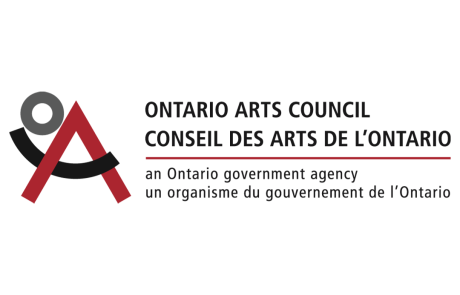Bob Boyer and Jeff Thomas
[Originally published: “Bob Boyer and Jeff Thomas. Border Crossings #94 2005: 108-9.]In one week this March you could see at least six Aboriginal visual art events in Regina: Mary Longman’s sculptures at the Mackenzie Art Gallery, a performance by Reona Brass at Art Projects and another by Sharon Pelletier at the University of Regina, an exhibition of Michel Boutin’s paintings at the Exchange, Bob Boyer’s memorial show at the Dunlop and Jeff Thomas’s photographs at the Sherwood Village Art Gallery. And this is not usual in Saskatchewan. Thanks to a critical mass of Aboriginal artists and curators in or from this province, a long-term commitment by curators, art galleries and funders, and demand from an interested public, First Nation and Métis art is getting unprecedented exposure. As a result, artists are under pressure to mature their practices in a hurry. And many are succeeding. In this, the year Rebecca Belmore represents Canada at the Venice Biennale, we are experiencing an explosion of ambitious contemporary Aboriginal art.
An important early leader in this local development died last August. Bob Boyer (1948-2004) was Head of Visual Arts at the First Nations University of Canada. He taught and worked with many of our leading artists in both traditional and contemporary arts. He also curated several important exhibitions and quietly mentored many artists—including me. There is not enough space here to properly eulogize Bob; only enough to say that he made a lasting mark and will be missed.
Bob Boyer: Local Hero (Jan. 22-March 6) is a quickly assembled memorial exhibition that will do until a thorough retrospective can be mounted. It is a collage of fifteen paintings, a photograph of Bob in the elaborate pow wow regalia he made himself and a good biographical video. Two paintings are from the 1970s, most are excellent examples from “Blanket Statement,” the series he is best known for. These beautiful and subtly challenging paintings combine the formal lessons learned from his Regina Five teachers, especially Ted Godwin, and Indigenous textiles from the Northern Plains Cree to Central America.
Bob often protested that he was not political. He was a modest but quietly forceful man. You only had to ask his thoughts to be given them. And they were often political and ethical. He once told me that he was not interested in politics because he was afraid that he would not be able to contain his anger. Being even-tempered was important to him. He also told me that he was interested in making beautiful things, that he and the people he made things for were not interested in increasing ugliness in the world. Finding a space between these positions is the special problem Bob set out to solve and “Blanket Statements” are his elegant solutions.
A Smallpox Issue (1983) is a typical and powerful example of this problem solving. It is a real, grey blanket stretched on the wall by six strips of rawhide. It evokes both the blankets given to First Nation people by the government in the 1800s and traditional stretched hides. Like the Métis, it is a hybrid—a new, adaptable being with traces of two histories. Painted in oil on the unsized blanket are three patterned sections. The top fifth has geometric shapes on a dark blue band. The bottom band is red. The large center space holds a grid of twenty brightly coloured circles with another disk painted inside each one. It looks like a formalist inspired abstract painting. It is a beautiful thing that you could live with on your wall. But the title and context hint of darker meanings. Similar arrangements of triangles in the top band appear in many of Bob’s paintings and usually signify tee pees/homes. The thick red band at the bottom may represent earth and blood. Many of Bob’s paintings are maps or schematic aerial views. The circles represent small pox infections and echo similar representations in ledger drawings. Jared Diamond explains that diseases borne by Europeans, including smallpox, wiped out at least 90 percent of the Indigenous populations of the Americas in advance of colonization. It is also known that government officials in the 1800s sought to speed up the extermination by giving Indigenous people small pox infected blankets.
Through his art, Bob was able to at once create visual pleasure, interpret history and express his rage. They are both private, therapeutic means to work out his thoughts, feelings and research and also public documents waiting for canny minds to read them. Like the man, these paintings are generous yet conflicted. They are full of meanings that will take some time to decoded.
Jeff Thomas’ exhibition, A Study of Indian-ness, at the Dunlop’s satellite space, also tackles colonial history and its consequences. Packed into the small Sherwood Village library gallery, this impressive collection of photo-based works reads more like an archive than an exhibition. The viewer sifts through the show like a visiting scholar. Thomas, an Iroquois/Onondaga artist and curator living in Ottawa, has a project familiar to many Aboriginal artists who do not speak their language and were raised and still live in cities. Who is an Indian? How can you tell? His methodology is, in part, to appropriate strategies from, and argue with, the creative “documentary” photographer Edward Curtis and ethnographer Sir Francis Knowles. He ‘scouts’ for Indians and signs of Indian-ness in cities and countryside. Instead of seeing himself as “colonized,” he empowers himself in the role of research photographer and ethnologist. Like his dominant culture precursors, he has an interested point-of-view, only his is declared.
When, for example, his search takes him to the Champlain Monument at Nepean Point, Ottawa, his lens records the “Indian scout” rather than Champlain. The notorious sculpture of a clearly subservient man is refigured in this re-presentation. While not entirely rescued, he is given more presence than his one-time master. This gesture also renders the photographer’s agenda an equal subject; one that has the viewer reconsider other representations from a similar position. Thomas’ approach invites the viewer to work along side him to analyze not only the evidence but the discourses that present it.
The images of Thomas’ son, Bear, are particularly moving. At times he is placed in contexts that look staged, he seems reluctantly posed within his father’s project. Some times, as when he faces us like a stoic cigar store Indian (?), or a sun-glassed rebel, he seems to be challenging both the viewer, his father and even the notion of such image making. Other times, he appears to share his dad’s investigation by trying on various contemporary urban Indian identities. While Thomas presents his research fairly dispassionately, in images like these, strong feelings course under the composed surface. Both exhibitions suggest at the range and depth of contemporary visual research by Aboriginal people.
 David Garneau (Métis Nation of Saskatchewan) is a Professor of Visual Arts at the University of Regina. He is a painter, curator, and critical art writer who engages in creative expressions of Indigenous contemporary ways of being. Garneau curated Kahwatsiretátie: The Contemporary Native Art Biennial (Montreal, 2020) with assistance from Faye Mullen and Rudi Aker; He co-curated, with Kathleen Ash Milby, Transformer: Native Art in Light and Sound, National Museum of the American Indian, New York (2017). With Tess Allas, he co-curated With Secrecy and Despatch, for the Campbelltown Art Centre, Sydney, Australia (2016). He and Michelle Lavallee curated Moving Forward, Never Forgetting at the Mackenzie Art Gallery (2015). Garneau has given keynotes on mis/appropriation; re/conciliation; public art; museum displays; and Indigenous contemporary art. He presented, Dear John, a performance featuring the spirit of Louis Riel meeting with John A. Macdonald statues in Regina, Kingston, and Ottawa. David recently installed a large public artwork, the Tawatina Bridge paintings, in Edmonton. His recent still life paintings, Dark Chapters, curated by Arin Fay, will tour Canada in 2025. In 2023, Garneau was awarded the Governor General’s Award in Visual and Media Art: Outstanding Achievement and was inducted into the Royal Society of Canada.
David Garneau (Métis Nation of Saskatchewan) is a Professor of Visual Arts at the University of Regina. He is a painter, curator, and critical art writer who engages in creative expressions of Indigenous contemporary ways of being. Garneau curated Kahwatsiretátie: The Contemporary Native Art Biennial (Montreal, 2020) with assistance from Faye Mullen and Rudi Aker; He co-curated, with Kathleen Ash Milby, Transformer: Native Art in Light and Sound, National Museum of the American Indian, New York (2017). With Tess Allas, he co-curated With Secrecy and Despatch, for the Campbelltown Art Centre, Sydney, Australia (2016). He and Michelle Lavallee curated Moving Forward, Never Forgetting at the Mackenzie Art Gallery (2015). Garneau has given keynotes on mis/appropriation; re/conciliation; public art; museum displays; and Indigenous contemporary art. He presented, Dear John, a performance featuring the spirit of Louis Riel meeting with John A. Macdonald statues in Regina, Kingston, and Ottawa. David recently installed a large public artwork, the Tawatina Bridge paintings, in Edmonton. His recent still life paintings, Dark Chapters, curated by Arin Fay, will tour Canada in 2025. In 2023, Garneau was awarded the Governor General’s Award in Visual and Media Art: Outstanding Achievement and was inducted into the Royal Society of Canada.
Photo credit: Mika Abbott









